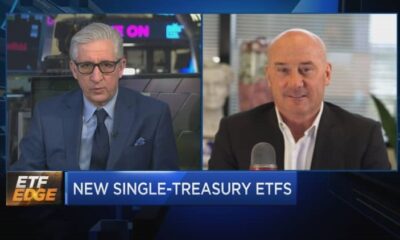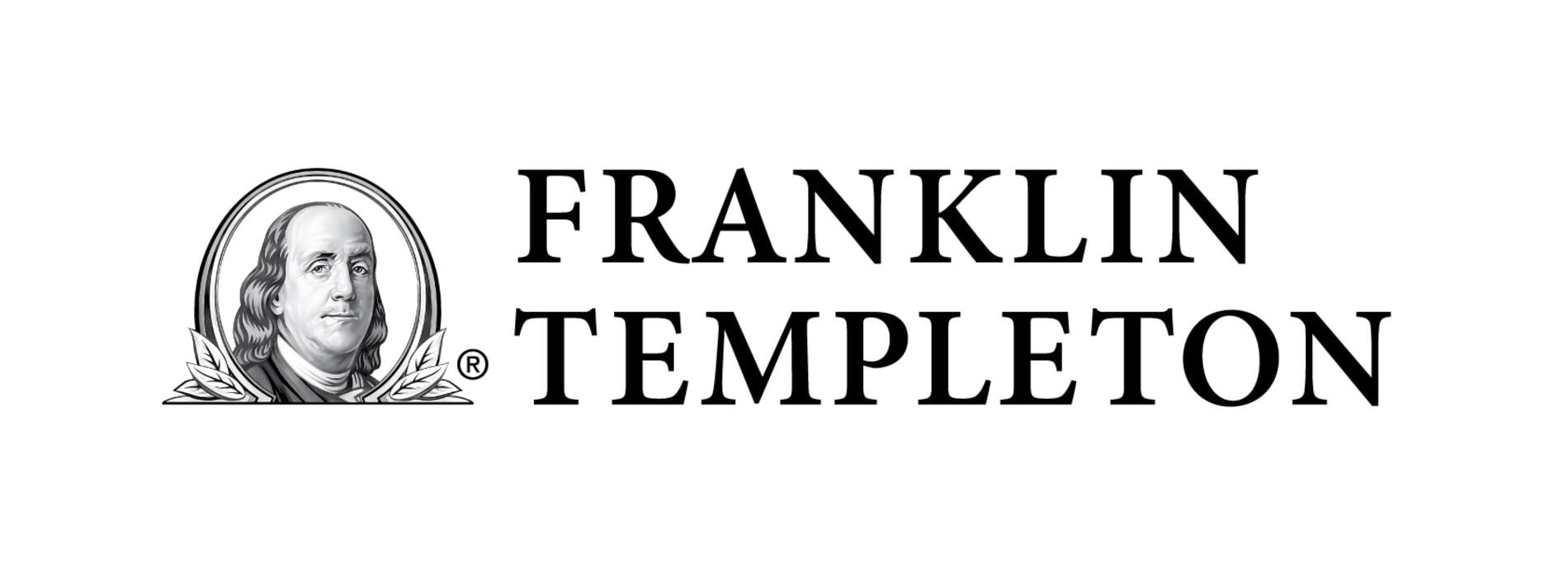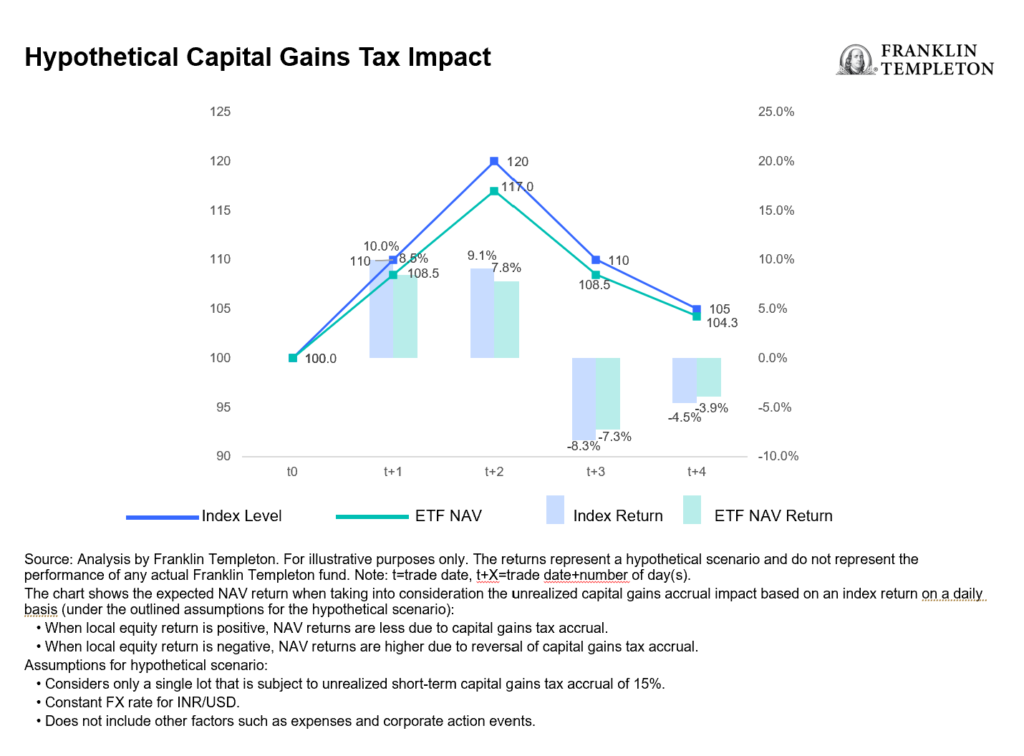Nyheter
Three thoughts on 2018 by Carmignac
Publicerad
6 år sedanden

Three thoughts on 2018 By Didier Saint-Georges – Managing Director, Investment Committee Member
Detailed market predictions are only of limited value. For example, the consensus forecast twelve months ago was for the S&P to rise 6% over the year – a result the index achieved in just six weeks. The same analysts, by the way, had anticipated an average 10% increase in the S&P 500 in 2008. What they got instead was a 40% nosedive. The investors with the best track record in 2017 often expected at the start of the year a strong dollar and higher interest rates. However, they were capable of shifting gears, ditching their prior views and leveraging new trends. Or else they were lucky enough to be mainly invested in euros.
To be sure, crafting a central scenario is an essential first step. (We presented ours for 2018 in Carmignac’s Note of December, “Fooled by the Cassandra syndrome”.) But such a scenario must be underpinned by an analysis of both upside and downside risks – in other words, an understanding of the key challenges that could push markets dramatically upwards or downwards in the event of a major inflection.
Awareness of potential risks and rewards does not preclude an opportunistic approach. If anything, we should have been more opportunistic this past year. That said, in the long run, such an awareness is vital to generating solid performance across market cycles.
Those challenges fall into three distinct yet interdependent categories: market configuration (valuations, liquidity, positioning, sentiment, flows), macroeconomic factors (growth, inflation, interest rates) and political factors (sovereign risk, geopolitical risk, electoral upsets).
Our analysis suggests that in 2018 issues with a crucial impact on all financial markets will loom much larger than in 2017. That highlights the need to keep our eyes wide open as the year unfolds.
Political factors
The investment community widely assumes that this area is of only secondary importance to markets, and rightly so. It is even tougher to forecast political developments than economic changes, not to mention their effect on financial markets. Moreover, because this past year’s elections in the United States, the United Kingdom and continental Europe proved to be less momentous than anticipated, a good many investors now seem to feel they can safely ignore politics altogether. We don’t view that as such a good idea at present, and for three main reasons.
First, the financial and economic impact of political events often takes a while to show up on the radar screen. For example, we can reasonably expect the blowback from the pro-Brexit vote to cause greater economic pain in 2018 than in 2017. A weaker pound sterling will raise the cost of imports and thus take a large bite out of household spending. At the same time, the upcoming second phase of the negotiations between Britain and the European Commission on their future trade relations will generate additional uncertainty – regarding both the ultimate terms agreed to and the future of the May Government – that is likely to discourage investment in the country. And lastly, any monetary tightening by the Bank of England to defend the national currency would intensify the nascent economic slowdown. We are therefore starting the year with a short position on sterling which should pay off if a downward spiral gets going.
On the other side of the Atlantic, Donald Trump’s protectionist rhetoric, which was more or less put on the back burner in 2017, will probably move up the list of policy priorities in 2018. Once the US President is back on the economic warpath, most notably against China, he might well wield a more competitive dollar as a weapon. We have accordingly begun the year with ample exchange rate hedges on our dollar-denominated assets. On the other hand, it is worth noting that this outlook will potentially mean good news for our emerging market holdings, which we have beefed up. The second reason for taking politics seriously in 2018 is that several far-from-innocuous elections are scheduled to take place. In Mexico and Brazil, the outcomes will determine whether the reform policies under way will continue or not. Closer to home, the formation of a new Government in Germany in the coming weeks and the Italian elections in March will send out very clear signals as to whether the recent pan-European wave of reform initiated by French President Macron last year will hold out. Special attention must be paid in this environment to sovereign yields on the EU periphery. Assuming political developments take a favourable turn – our central scenario – Europe’s single currency, which is preponderant in our portfolios, will come out ahead.
We are also keeping a close watch on developments in the Middle East, a region currently wracked by the threat of political and therefore economic instability. As the historical record shows, lastingly autocratic regimes find themselves highly vulnerable when they finally make a timid attempt at reform, most often under pressure. (This is a danger that Chinese President Xi Jinping strongly senses and takes great pains to avoid.) We consider our holdings in Western oil producers, particularly American, and our gold stocks a high-potential form of insurance against mounting political risk in the Middle East.
Macroeconomic factors
“Any disappointments in relation to global growth would work to the advantage of growth stocks in the US and emerging markets”
Rippling out from China’s industrial stimulus programme in early 2016, the global economic upswing proceeded so fast that it proved to be the outstanding pleasant surprise of 2017. Citigroup’s US Economic Surprise Index reached an all-time record at year-end, and while the Eurozone equivalent saw less spectacular progress, it still jumped at end-November to its highest level since 2010. No offence is meant to economists when we point out that this index is a fairly reliable contrarian indicator of surprises to come. Now that the economic forecasts for 2017 have turned out to be way too pessimistic, they have predictably been revised upwards for 2018 – just when sentiment, consumer spending and output are going at full steam.
So even if it is fair to expect the global economy to keep up the pace in 2018, the risk this time around is rather that the news will be disappointing. Now, this outlook involves a certain amount of risk for equities, particularly those in cyclical industries fuelled until now by US tax reform and the recovery in Europe. But it also opens up opportunities, above all in the United States – which is where we see the greatest chance of disappointment, leaving the dollar more vulnerable and limiting the rise in interest rates, this scenario would give a hefty boost to growth stocks in the United States and the emerging markets, which make up a significant share of our holdings.
Source: Carmignac, 31/10/2017
Market configuration
“Market price distortion certainly reached a pinnacle in 2017”
Financial markets as a whole have experienced a historic bull phase for close to ten years now, and that’s putting it mildly. Worldwide stock market capitalisation has tripled since its 2009 low. Even more striking is the fact that bond and credit markets have also performed well. It is worth stressing the irony of this financial market chain reaction. After all, the failure of central banks to push up inflation was what justified those long years of systematic bond-buying through expansion of the money supply, whose inevitable effect was to boost all asset classes – in violation of economic rationality. The increasing weight of passive and algorithm-based asset management styles has amplified the trend.
Market price distortion certainly reached a pinnacle in 2017: the long-awaited economic upswing, which accelerated the stock market rally, has yet to trigger any serious adjustment in bond markets. But on that front, 2018 may well mark a major turning-point. Though the central banks won’t abruptly cut off the flood of cash they have poured into financial markets since 2009, they will gradually scale back their monthly worldwide injections, most likely to zero by the end of the year. In fact, the US Federal Reserve will go into net liquidity withdrawal mode for the first time ever. Steering such a historic shift without setting off violent market corrections is the unprecedented challenge soon to face central bankers. Meanwhile, now that even most conventional safe-haven assets have become exceedingly pricey, risk managers will need to make use of appropriate hedge instruments to actively manage exposure levels.
As we mentioned in the introduction, those three categories – political, macroeconomic and technical market factors – are distinct yet interdependent. A belated surge in inflationary pressure would encourage central banks to proceed faster with monetary policy tightening, underscoring in the process how overpriced bonds now are. Conversely, any disappointments on economic growth, or even inflation, would put central bank credibility to the test.
At the same time, investor sentiment, as currently reflected in valuations and historically low market volatility, will be sensitive to both central bank policy and the political environment. Financial markets form a system, one whose internal workings have experienced unprecedented distortion as a result of central bank intervention. Going forward, that system is set for a sea change. And when it comes, there will be radically new risks and opportunities for investors.
Source: Bloomberg, 2/1/2018
Investment strategy
Equities
Equity markets ended the year with a bang as Brazil and other emerging economies pulled out in front in December. With equity exposure close to the maximum allowed for our funds and thanks to our overweight position in emerging markets, we reaped the benefits of that trend. In sectorial terms, our balanced allocation policy enabled us to offset selective profit-taking on tech stocks with our commodity positions (gold mines and oil producers), which posted solid gains during the month. We have also continued to diversify our tech portfolio, seeking out new investment ideas with the potential to capitalise on the structural shifts under way. For example, during our latest study trip to the United States, we initiated a position in Shopify, a multi-brand, multi-channel e-commerce platform.
We also factored in the tax reform passed in the United States and accordingly raised our exposure to the US financial sector. Among other positions, we bought Synchrony Financial, a consumer financial services company. With the business cycle soon likely to peak, we are entering 2018 with a particular attention approach to stock-picking, coupled with a soundly diversified, balanced geographic and sectorial allocation.
Fixed income
The market had well anticipiated both the far-reaching tax-cut law passed by Congress and the Fed’s intention to hike interest rates again. The result was that neither change had much of an impact on US Treasury yields, which along with those of Germany gained less than 10 basis points during the month. Thanks to adroit handling by the central bankers – with Mario Draghi’s patient, prudent stance on normalising the Eurozone’s monetary policy worthy of special mention – safe-haven sovereign yields held largely steady throughout 2017. In contrast, 2018 is likely to be a more trying year for the European Central Bank as the Fed carries on with its normalisation plans. That explains why we maintain our short position on German government bonds.
Because we were invested across bond market segments offering attractive risk premia, we had little trouble managing the mixed developments of December. On the EU periphery, we took advantage of the sharp drop that Greek bond yields experienced in December, even as Italian yields crept upwards. In the emerging market space, our Brazilian debt positions sustained their rally in December, although our Mexican bonds were hurt by the geopolitical climate.
Currencies
The euro finished the year on a positive note, appreciating by over 10% against the dollar over the 12-month period. And as we believe that secular issues underlie the greenback’s current weakness, we plan to maintain our majority allocation to Europe’s single currency. A weaker dollar has translated into greater strength for emerging market currencies, except for a Mexican peso dogged by both domestic political woes and tense negotiations over the future of the North American Free Trade Agreement (NAFTA).
Having identified that risk during our latest trip across the Atlantic, we selectively put in place hedges on the Mexican currency in our emerging market funds. One last point on currencies potentially exposed to geopolitical risk. In our global funds, we continue to be sellers of the British pound.
Du kanske gillar
-


FED är klara nu säger SEB
-


Höjer FED räntan till högsta nivån på 22 år?
-


Stor handelsplattform ser ökat intresse för obligationsfonder
-


Förhållandet guld-till-silver stiger till den högsta nivån sedan 1990
-


Förhållandet guld-till-silver stiger till den högsta nivån sedan 1990
-


HEWW ETF en valutasäkrad börshandlad fond
Nyheter
Vilken är den bästa fond som följer Nasdaq-100?
Publicerad
3 timmar sedanden
28 april, 2024
Nasdaq 100-indexet följer de 100 största aktierna noterade på Nasdaq-börsen. De utvalda företagen kommer huvudsakligen från sektorer som hårdvara och mjukvara, telekommunikation, detaljhandel och bioteknik – inklusive alla stora amerikanska teknikföretag. Däremot ingår inte företag från energi-, finans- och fastighetssektorerna i Nasdaq-100. Vilken är den bästa fond som följer Nasdaq-100?
I USA har den populära QQQ ETF, som spårar Nasdaq 100, varit tillgänglig sedan 1999. Den förvaltas av Invesco. Den europeiska motsvarigheten till denna ETF använder tickersymbolen eQQQ. Till skillnad från den amerikanska marknaden finns det dock flera ETF-leverantörer i Europa som spårar Nasdaq 100 – så det är värt att jämföra.
ETF-investerare kan dra nytta av värdeökningar och utdelningar från Nasdaq 100-beståndsdelarna. För närvarande spåras Nasdaq 100-indexet av tretton ETFer.
Förvaltningsarvode fond som följer Nasdaq-100
Nedan har vi listat förvaltningsarvoden för fond som följer Nasdaq-100. Samtliga dessa ETFer har en konkurrenskraftig prissättning, allt från AXA IM Nasdaq 100 UCITS ETF USD Acc, som debiterar sina andelsägare 0,14 procent per år till iShares Nasdaq 100 UCITS ETF (Acc) som tar ut 0,33 procent i arvode. I jämförelse kostar de flesta aktivt förvaltade fonder mycket mer avgifter per år.
| Namn | Valuta | ISIN | Kortnamn | Förvaltningsavgift |
| AXA IM Nasdaq 100 UCITS ETF USD Acc | USD | IE000QDFFK00 | ANAU | 0.14% |
| Invesco Nasdaq-100 Swap UCITS ETF Acc | USD | IE00BNRQM384 | EQQX | 0.20% |
| Invesco Nasdaq-100 Swap UCITS ETF Dist | USD | IE000RUF4QN8 | EQQD | 0.20% p.a. |
| Xtrackers Nasdaq 100 UCITS ETF 1C | USD | IE00BMFKG444 | XNAS | 0.20% |
| Amundi Nasdaq-100 II UCITS ETF Acc | EUR | LU1829221024 | LYMS | 0.22% |
| Amundi Nasdaq-100 II UCITS ETF Dist | USD | LU2197908721 | NADQ | 0.22% |
| Amundi Nasdaq 100 UCITS ETF EUR (C) | EUR | LU1681038243 | 6AQQ | 0.23% |
| Amundi Nasdaq 100 UCITS ETF USD | USD | LU1681038326 | 10A4 | 0.23% |
| Deka Nasdaq-100® UCITS ETF | EUR | DE000ETFL623 | D6RH | 0.25% |
| Invesco EQQQ Nasdaq-100 UCITS ETF | USD | IE0032077012 | EQQQ | 0.30% |
| Invesco EQQQ Nasdaq-100 UCITS ETF Acc | USD | IE00BFZXGZ54 | EQQB | 0.30% |
| iShares Nasdaq 100 UCITS ETF (DE) | USD | DE000A0F5UF5 | EXXT | 0.31% |
| iShares Nasdaq 100 UCITS ETF (Acc) | USD | IE00B53SZB19 | SXRV | 0.33% |
Som alltid vill vi påminna att om det finns flera olika börshandlade fonder som täcker samma index eller segment är det förvaltningskostnaden som avgör. Antar vi att dessa Nasdaqfonder ger samma avkastning kommer den som har lägst avgift att utvecklas bäst, allt annat lika. Grundregeln är alltså, betala aldrig för mycket då detta kommer att äta upp din avkastning.
Nasdaq 100 ETFer i jämförelse
Förutom avkastning finns det ytterligare viktiga faktorer att tänka på när du väljer en Nasdaq 100 ETF. För att ge ett bra beslutsunderlag hittar du en lista över alla Nasdaq 100 ETFer med detaljer om vinstanvändning, fondens hemvist och replikeringsmetod.
| Namn | Utdelningspolicy | Hemvist | Replikeringsmetod |
| iShares Nasdaq 100 UCITS ETF (Acc) | Ackumulerande | Irland | Fysisk replikering |
| Invesco EQQQ Nasdaq-100 UCITS ETF | Utdelande | Irland | Fysisk replikering |
| iShares Nasdaq 100 UCITS ETF (DE) | Utdelande | Tyskland | Fysisk replikering |
| Amundi Nasdaq-100 II UCITS ETF Acc | Ackumulerande | Luxemburg | Ofinansierad swap |
| Invesco EQQQ Nasdaq-100 UCITS ETF Acc | Ackumulerande | Irland | Fysisk replikering |
| Amundi Nasdaq 100 UCITS ETF EUR (C) | Ackumulerande | Luxemburg | Ofinansierad swap |
| Amundi Nasdaq-100 II UCITS ETF Dist | Utdelande | Luxemburg | Ofinansierad swap |
| AXA IM Nasdaq 100 UCITS ETF USD Acc | Ackumulerande | Irland | Fysisk replikering |
| Xtrackers Nasdaq 100 UCITS ETF 1C | Ackumulerande | Irland | Fysisk replikering |
| Invesco Nasdaq-100 Swap UCITS ETF Acc | Ackumulerande | Irland | Ofinansierad swap |
| Amundi Nasdaq 100 UCITS ETF USD | Ackumulerande | Luxemburg | Ofinansierad swap |
| Invesco Nasdaq-100 Swap UCITS ETF Dist | Utdelande | Irland | Ofinansierad swap |
| Deka Nasdaq-100® UCITS ETF | Utdelande | Tyskland | Fysisk replikering |
Handla fond som följer Nasdaq-100
Samtliga dessa ETFer är europeiska börshandlade fonder. Dessa fond handlas på flera olika börser, till exempel Deutsche Boerse Xetra och London Stock Exchange.
Det betyder att det går att handla andelar i denna ETF genom de flesta svenska banker och Internetmäklare, till exempel DEGIRO, Nordnet, Aktieinvest och Avanza.
Nyheter
Inevitable in India: Crowds, cricket and capital gains tax
Publicerad
4 timmar sedanden
28 april, 2024
India’s vibrant economy and structural growth opportunities continue to be the envy of many emerging markets. But somewhat unique to this market are tax implications that investors should be aware of. Our Franklin Templeton Global ETF team examines these structural issues in Asia’s third-largest economy.
In merely a decade, India has taken a quantum leap from the world’s 11th largest economy to become its fifth largest. By many accounts, it is expected to remain one of the world’s fastest-growing major economies over the coming years. And even after a banner 2023 during which the country’s benchmark indexes surged and Indian Prime Minister Narendra Modi celebrated high-profile successes—from historic technological and space exploration achievements to rising global diplomatic clout—this election year has already marked more progress in supporting Modi’s pro-growth, pro-jobs efforts.
The world’s most populous nation has advanced ties with Western countries over free trade. In addition to agreements with Australia and the United Arab Emirates, it has worked to better integrate the “Global South’s” development needs and ambitions with that of the G20. Modi has touted innovative partnerships for a new multilateral rail and sea corridor to connect India with the Middle East and the European Union (EU)—seen as a counterweight to China’s vast Belt-and-Road infrastructure corridor.
India reached its latest notable trade pact, nearly 16 years in the making, in March with the European Free Trade Association—Iceland, Liechtenstein, Norway and Switzerland. The agreement lifts Indian tariffs to secure US$100 billion in foreign direct investment commitments from the non-EU markets to India across multiple sectors.

With India still an enviable investment powerhouse, it seems important to clarify a few aspects of this dynamic equity market.
How exchange-traded funds (ETFs) treat India capital gains tax (CGT)
Foreign investors should be aware that CGT is an integral part of investing in Indian equities that cannot be circumvented. Investors in India funds are subject to CGT implications regardless of fund provider, and CGT is based and calculated on a fund as a whole, not an individual investor’s position.
The details: Foreign investors owning local Indian stocks are subject to taxation on capital gains at a short-term rate of 15% for positions held for less than one year and at a long-term rate of 10% for positions held over one year.
To accrue or not to accrue: Consistent with market practice for US-listed India ETF providers, Franklin Templeton accrues unrealized CGT in its daily net asset value (NAV). This can lead to differences in performance relative to the benchmark, which does not include CGT. As a result, rising markets will typically lead to fund underperformance against a benchmark, while weaker market environments will typically generate outperformance (provided the fund is in an unrealized capital gain position where the current market value of fund holdings is above their historical book cost). See chart below.

For UCITS-listed India funds, there is a divergence in methods utilized by fund providers in accruing and reporting CGT. Some do not accrue unrealized CGT in the NAV, but will charge CGT to investors directly at redemption, which we believe leaves investors with a level of opaqueness and uncertainty over their ultimate proceeds. This method also creates an elevated NAV compared to what investors will actually experience. While Franklin Templeton’s approach to CGT may at times lead to a higher tracking difference,1 we believe investors benefit from increased transparency and a more reflective experience.
The magnitude and impact of CGT for a specific fund is heavily dependent on several variables, such as the timing of purchases and sales, performance of the holdings and their volatility, and the size of flows in and out of the fund relative to its assets under management (AUM).
Understanding the impact: The CGT impact to fund performance is driven by the path of returns, timing of individual lots and price points. Very broadly speaking, in rising markets, an NAV-accruing fund will likely underperform its benchmark and vice versa.
Consideration of comparability: Because different providers handle CGT differently, the comparability of fund performance metrics may be affected. As investors, it’s prudent to consider how these nuances may influence investment decisions within the broader context of your financial strategy.
The bigger picture: While CGT considerations are important, they should be viewed within the broader spectrum of investment objectives and risk tolerance. Taking a long-term perspective and being mindful of other important characteristics of the investment vehicle of choice may aid in the decision-making process.
In summary, India remains an attractive investment destination with compelling growth prospects for its equity markets. Investors seeking India allocation through an ETF should be aware of the current tax regime and what varying methods of accounting methodologies really mean for fund valuation.
Nyheter
XB33 ETF köper företagsobligationer i euro som förfaller 2033
Publicerad
5 timmar sedanden
28 april, 2024
Xtrackers II Target Maturity Sept 2033 EUR Corporate Bond UCITS ETF 1D (XB33 ETF) med ISIN LU2673523564, försöker följa Bloomberg MSCI Euro Corporate September 2033 SRI-index. Bloomberg MSCI Euro Corporate September 2033 SRI-index följer företagsobligationer denominerade i EUR. Indexet speglar inte ett konstant löptidsintervall (som är fallet med de flesta andra obligationsindex). Istället ingår endast obligationer som förfaller mellan oktober 2032 och september 2033 i indexet (ETF kommer att stängas i efterhand). Indexet består av ESG (environmental, social and governance) screenade företagsobligationer. Betyg: Investment Grade.
Den börshandlade fondens TER (total cost ratio) uppgår till 0,12 procent p.a. Xtrackers II Target Maturity Sept 2033 EUR Corporate Bond UCITS ETF 1D är den enda ETF som följer Bloomberg MSCI Euro Corporate September 2033 SRI-index. ETFen replikerar det underliggande indexets prestanda genom samplingsteknik (köper ett urval av de mest relevanta indexbeståndsdelarna). Ränteintäkterna (kupongerna) i ETFen delas ut till investerarna (Minst årligen).
Denna ETF lanserades den 8 november 2023 och har sin hemvist i Luxemburg.
Bloomberg MSCI Euro Corporate SRI PAB Index syftar till att spegla resultatet på följande marknad:
- EUR-denominerade företagsobligationer
- Endast obligationer med investeringsklass
- Obligationer med en löptid på minst 1 år
- Minsta utestående belopp på 300 miljoner euro per obligation
- Endast obligationer utgivna av företag med en MSCI ESG-rating på BBB eller högre och en MSCI ESG Impact Monitor över 1 ingår
Indexet övervakar absoluta växthusgasutsläpp (“GHG”) genom att sätta en initial 50 % avkolning av absoluta växthusgasutsläpp i förhållande till moderuniversumet följt av en årlig 7 % avkolningsbana för absoluta växthusgasutsläpp.
Obligationer utgivna av företag som är involverade i alkohol, tobak, hasardspel, vuxenunderhållning, genetiskt modifierade organismer (GMO), kärnkraft, civila skjutvapen, militära vapen (inklusive minor, klusterbomber, kemiska vapen) är undantagna.
Handla XB33 ETF
Xtrackers II Target Maturity Sept 2033 EUR Corporate Bond UCITS ETF 1D (XB33 ETF) är en europeisk börshandlad fond. Denna fond handlas på Deutsche Boerse Xetra.
Det betyder att det går att handla andelar i denna ETF genom de flesta svenska banker och Internetmäklare, till exempel DEGIRO, Nordnet, Aktieinvest och Avanza.
Börsnoteringar
| Börs | Valuta | Kortnamn |
| XETRA | EUR | XB33 |
Största innehav
| ISIN | Namn | Vikt % | Land |
| IE00BZ3FDF20 | DEUTSCHE GLOBAL LIQUIDITY SERI | 0.54% | Irland |
| CH1214797172 | BBG01BFYVYX8 CREDIT SUISSE GROUP AG 3/29 | 0.18% | Schweiz |
| XS0525602339 | RABOBANK 07/25 | 0.14% | Holland |
| FR0000471930 | FRANCE TELECOM 01/33 | 0.13% | Frankrike |
| FR0013324357 | SANOFI SA 1.375% 2030-03-21 | 0.12% | Frankrike |
| XS1001749289 | MICROSOFT CORP 12/28 | 0.12% | USA |
| XS1372839214 | VODAFONE GROUP PLC 08/26 EUR51520 | 0.12% | Storbritannien |
| XS2461234622 | BBG0162QT3D3 JPMORGAN CHASE AND CO 3/30 | 0.11% | USA |
| XS2235996217 | NOVARTIS FINANCE SA 9/28 | 0.11% | Spanien |
| XS2705604234 | BBG01JPP1244 BANCO SANTANDER SA 10/31 | 0.11% | Spanien |
| FR0013398070 | BNP PARIBAS 01/26 AW746868 | 0.11% | Frankrike |
| XS2180007549 | AT&T INC 5/28 | 0.11% | Frankrike |
| XS2149207354 | GOLDMAN SACHS GROUP INC 3/25 | 0.10% | USA |
| XS1603892149 | MORGAN STANLEY DEAN WITTER 04/27 AN318761 | 0.10% | USA |
| CH0537261858 | CREDIT SUISSE GROUP AG SR UNSECURED REGS 04/26 VAR 4/25 | 0.10% | Schweiz |
Innehav kan komma att förändras

Vilken är den bästa fond som följer Nasdaq-100?

Inevitable in India: Crowds, cricket and capital gains tax

XB33 ETF köper företagsobligationer i euro som förfaller 2033

Ny ETF från Franklin Templeton investerar med katolska värderingar

Playing the AI revolution through commodities and gold’s curious rally

ETFmarknaden i Europa firar sitt 24-årsjubileum med tillgångar på två biljoner USD

De mest populära börshandlade fonderna mars 2024

Tillgång till obligationsmarknaden för företagsobligationer från utvecklade marknader

FUIG ETF investerar i hållbara företagsobligationer som följer Parisavtalet

Försvarsfond når förvaltad volym på 500 MUSD
Populära
-

 Nyheter2 veckor sedan
Nyheter2 veckor sedanETFmarknaden i Europa firar sitt 24-årsjubileum med tillgångar på två biljoner USD
-

 Nyheter4 veckor sedan
Nyheter4 veckor sedanDe mest populära börshandlade fonderna mars 2024
-

 Nyheter2 veckor sedan
Nyheter2 veckor sedanTillgång till obligationsmarknaden för företagsobligationer från utvecklade marknader
-

 Nyheter4 veckor sedan
Nyheter4 veckor sedanFUIG ETF investerar i hållbara företagsobligationer som följer Parisavtalet
-

 Nyheter2 veckor sedan
Nyheter2 veckor sedanFörsvarsfond når förvaltad volym på 500 MUSD
-

 Nyheter4 veckor sedan
Nyheter4 veckor sedanVad händer härnäst för Bitcoin?
-

 Nyheter3 veckor sedan
Nyheter3 veckor sedanNy börshandlad fond från Deka ger tillgång till S&P 500-index
-

 Nyheter2 veckor sedan
Nyheter2 veckor sedanBygg din egen pengamaskin



